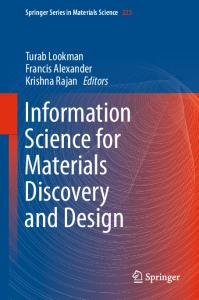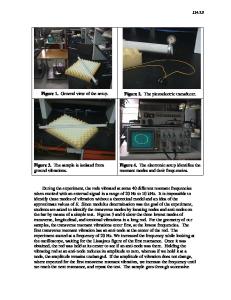Data-driven visualization schema of a materials informatics curriculum: Convergence of materials science and information
- PDF / 1,653,836 Bytes
- 11 Pages / 432 x 648 pts Page_size
- 30 Downloads / 341 Views
MRS Advances © 2020 Materials Research Society DOI: 10.1557/adv.2020.32
Data-driven visualization schema of a materials informatics curriculum: Convergence of materials science and information science Erik Einarsson, Olga Wodo, Prathima C. Nalam, Scott R. Broderick, Kristofer G. Reyes, E. Bruce Pitman, and Krishna Rajan Department of Materials Design and Innovation, The University at Buffalo, Buffalo, NY, USA
Abstract In addition to student assessment, curriculum assessment is a critical element to any pedagogy. It helps the educator assess the teaching of concepts, determine what may be lacking, and make changes for continual improvement. Meaningful assessment can be complicated when disciplines converge or when new approaches are implemented. To facilitate this, we present a network-based visualization schema to represent a materials informatics curriculum that combines materials science and data science concepts. We analyze the curriculum using network representations and relevant concepts from graph theory. This reveals established connections, linkages between materials science and data science, and the extent to which different concepts are connected. We also describe how some materials science topics are introduced from a data perspective, and present an illustrative case study from the curriculum.
INTRODUCTION Materials science is a highly interdisciplinary endeavor with roots in chemistry, physics, and various branches of engineering. The assorted historical origins make materials science a rich and diverse field, but the resultant differences in conventions and terminology can exacerbate fragmentation learning impediments [1,2], posing a challenge for students. In other words, recognizing links between new material and existing knowledge is more difficult when the concepts are viewed as belonging to separate categories. As a result, fundamental connections between different aspects of this broad discipline can be missed, irrespective of the depth to which each topic is studied. For example, crystal structures and phase diagrams are fundamentally thermodynamic representations, as are polymer conformation and microstructure. These can be connected via stochastic processes, but persistent preconceptions [3] may obscure
Downloaded from https://www.cambridge.org/core. Cambridge University Main, on 03 Feb 2020 at 21:17:58, subject to the Cambridge Core terms of use, available at https://www.cambridge.org/core/terms. https://doi.org/10.1557/adv.2020.32
this connection because soft and hard matter are conventionally treated as two separate fields. To present a more coherent picture of materials science, we assert that the curriculum presented to students should be reexamined in light of the discipline’s intrinsically empirical nature. The recent focus on data science and informatics [4] suggests the materials community may be primed for such an adjustment, but this requires a fundamental change in the way the wide range of topics in materials science is taught. The conventional approach is to first introduc
Data Loading...











